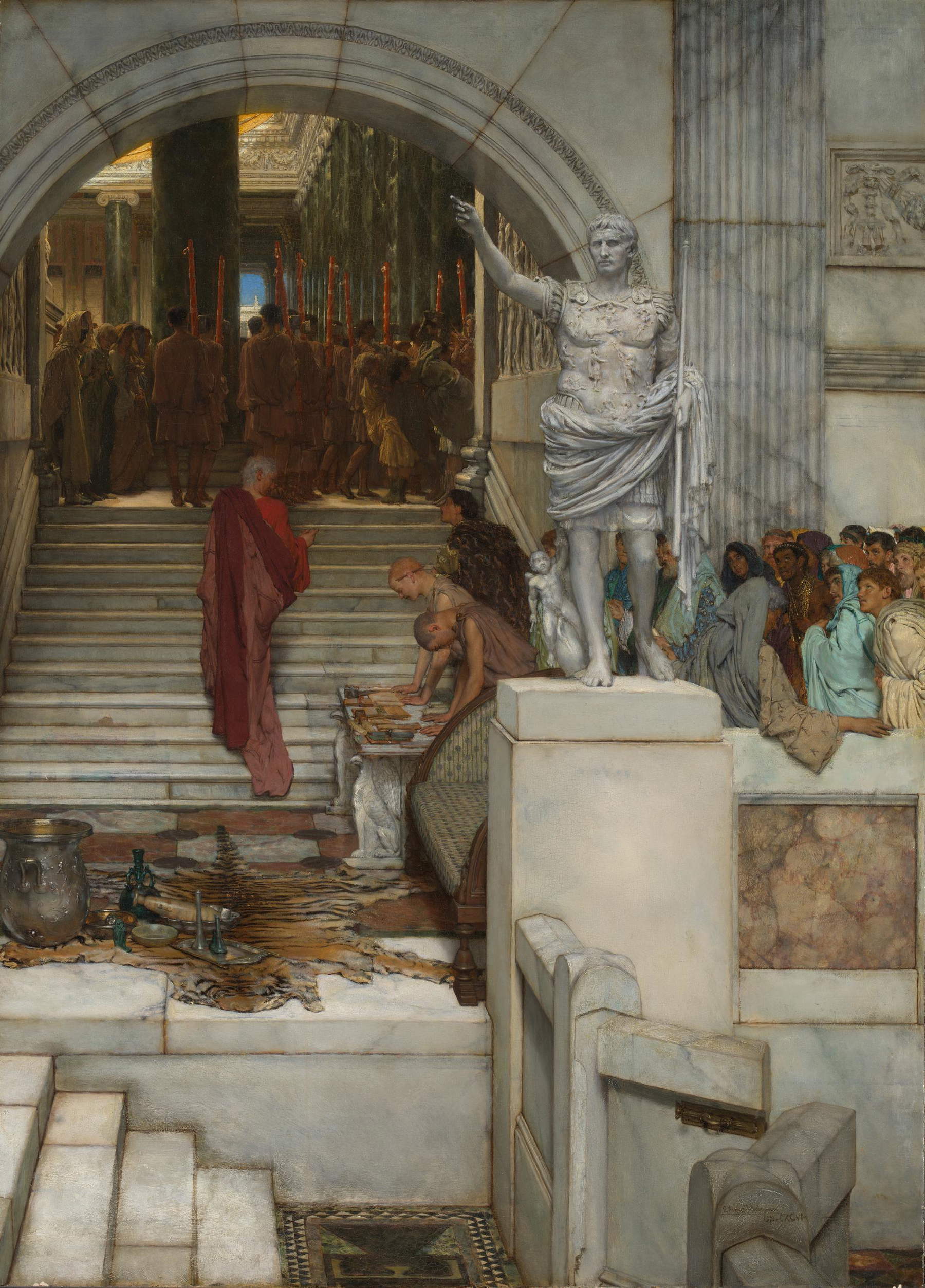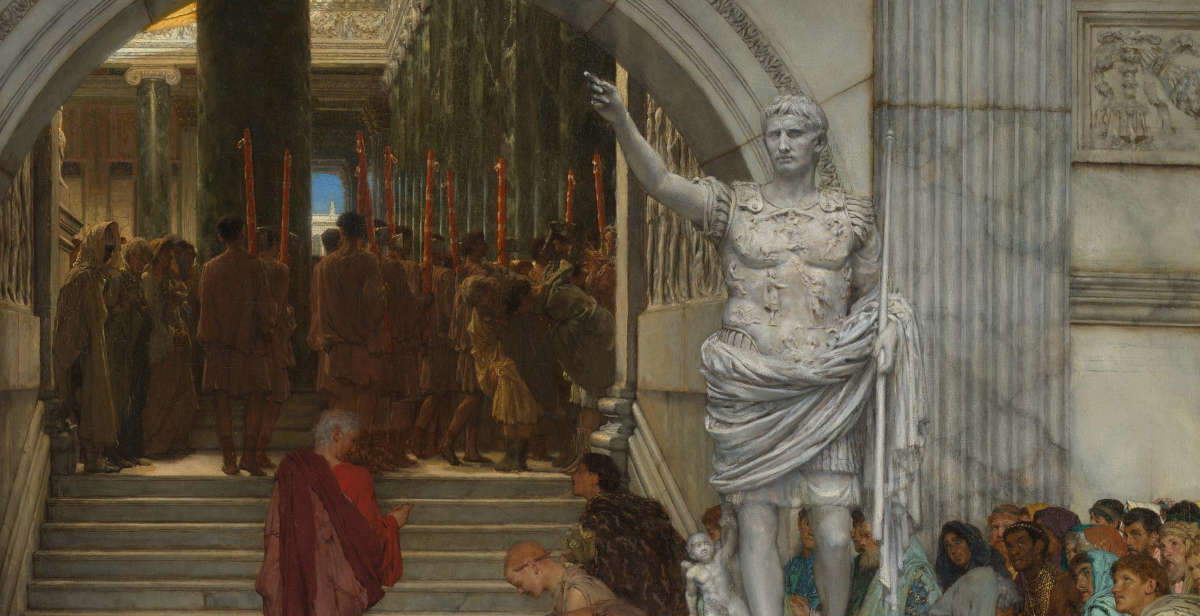The National Gallery in London acquires a masterpiece by Lawrence Alma-Tadema
Significant purchase by the National Gallery in London , which, to celebrate its 200th birthday, gives itself a masterpiece by Lawrence Alma-Tadema (Dronryp, 1836 - Wiesbaden, 1912), a work entitled After the audience, “After the audience”, a painting inspired byancient Rome that depicts Agrippa, the son-in-law of Emperor Augustus, returning to his villa after giving audience to several petitioners who had come from all corners of the empire (their gifts are depicted in the foreground). This is the third painting acquired by the National Gallery for its 200th anniversary, following Nicolas Poussin’sEucharist and Eva Gonzalès’s La Psyché , both of which arrived in the spring.
This painting by Alma-Tadema is among the artist ’s earliest works executed in the United Kingdom, and it is the only work by the artist in the National Gallery’s collection.
After the Audience was acquired from a private collection following negotiations brokered by Christie’s Private Sales. The purchase was made possible through the support of the National Gallery Trust and bequests from donors Martha Doris Bailey and Richard Hillman Bailey, Gillian Cleaver, and Sheila Mary Holmes.
The acquisition represents both Neoclassicism and Aestheticism, two important art movements in the Western tradition that have been largely neglected in the Trafalgar Square museum since the mid-20th century. Alma-Tadema was one of the most popular Victorian painters, admired in his lifetime for his accurate depictions of classical antiquity; however, after his death, his work went out of fashion, and only since the 1960s has it been appreciated for its importance in 19th-century painting.

The painting newly acquired by the National Gallery was considered by his contemporaries and later experts on Victorian painting to be one of Alma-Tadema’s masterpieces from the first decade after he settled in London. It was painted to impress William Armstrong, a wealthy Newcastle engineer and industrialist who had admired the artist’s earlier work, An Audience with Agrippa, now at the Dick Institute in Kilmarnock, Scotland, when it was exhibited to great acclaim at the Royal Academy in 1876. Although the precise details of the commission are unclear, it is known that Armstrong was eager to acquire a similar composition for his collection. However, Alma-Tadema chose instead to depict the moment at the end of the audience, rather than the beginning, with the key figure of Agrippa ascending the stairs of his imposing mansion and walking away from the supplicants and objects gathered on the landing below.
Although comparable in scale and broadly similar in composition, particularly in architectural setting and prominence of the statue, this second version is considered by the National Gallery to be more complex, populated, and ambitious than the first. Although paired scenes such as these, showing narratives relating to the “before and after” of a single event, were sometimes used by artists in this period, Alma-Tadema may simply have taken the opportunity presented by Armstrong’s patronage to improve on a successful formula.
Nevertheless, Armstong would seem to have taken such substantial changes as a personal affront and decided not to purchase the painting. Nevertheless, the painting was very well received when it was first exhibited at the Royal Scottish Academy in 1879.
The main protagonist of After the Audience is, as anticipated, Marcus Vipsanius Agrippa, a general, statesman and architect, as well as a close friend, son-in-law and lieutenant of Augustus, who reigned as the first Roman emperor from 27 BC. Agrippa was also the funder of Augustus’ program to construct notable buildings, including the Pantheon, the Basilica of Neptune, the Baths of Agrippa, and numerous aqueducts and sewers.
“We continue to celebrate our 200th anniversary with our third acquisition this year,” says Gabriele Finaldi, director of the National Gallery. “We can now represent in our collection the Dutch artist Lawrence Alma-Tadema, who, after settling in London, became a very important figure in the British art world of the late 19th century. We are grateful to the legacies of Martha Doris Bailey and Richard Hillman Bailey, Gillian Cleaver and Sheila Mary Holmes, with support from the National Gallery Trust, for enabling us to acquire this extraordinary painting.”
 |
| The National Gallery in London acquires a masterpiece by Lawrence Alma-Tadema |
Warning: the translation into English of the original Italian article was created using automatic tools. We undertake to review all articles, but we do not guarantee the total absence of inaccuracies in the translation due to the program. You can find the original by clicking on the ITA button. If you find any mistake,please contact us.




























